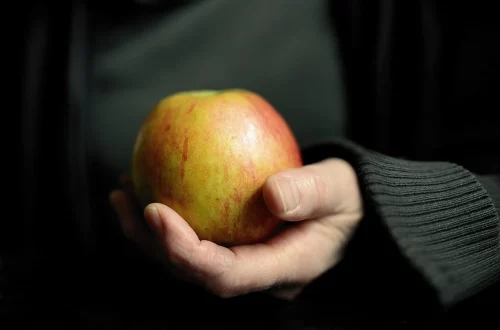
How Much Does a Bengal Cat Cost: Factors That Influence the Price
Bengal cats have captivated feline enthusiasts with their striking appearance and playful personalities. These hybrid cats are known for their distinctive coat patterns, which resemble those of wild leopards, and their energetic demeanor. As one of the most sought-after breeds, potential owners often find themselves asking a crucial question: how much does a Bengal cat cost? The price of a Bengal cat can vary significantly based on various factors, ranging from the cat’s lineage and breeder reputation to geographical location and unique physical traits. Understanding these elements is essential for prospective cat owners who want to ensure they are making a well-informed decision. Beyond the initial purchase price, there are also ongoing costs associated with caring for a Bengal cat, which can add to the overall financial commitment. As we delve deeper into the aspects that influence the cost of Bengal cats, it’s important to consider both the financial and emotional investments required to welcome one of these beautiful animals into your home.
Understanding the Breed: Characteristics and Appeal
Bengal cats are not just beautiful; they are also known for their unique characteristics that set them apart from other domestic breeds. Their wild ancestry, stemming from a cross between domestic cats and the Asian leopard cat, contributes to their striking appearance and lively personality. Bengals are typically medium to large in size, with a solid, muscular build, and their coats can feature a variety of patterns, including spots, rosettes, and marbled designs. The texture of their fur is often described as luxurious and soft, sometimes even resembling that of a wild cat.
The appeal of Bengal cats goes beyond their physical attributes. They are renowned for their playful and inquisitive nature, making them engaging companions for families and individuals alike. Bengals are known for their high energy levels and intelligence, which means they require ample stimulation and interaction. This breed tends to be more active than many others, often exhibiting dog-like traits such as playing fetch or following their owners around the house.
Moreover, Bengals are generally social and thrive on companionship, whether it’s with their human family or other pets. This sociable demeanor can influence their price, as those who are raised in environments that encourage socialization may be more desirable. Prospective owners should consider whether they can meet the needs of such an active and social breed, as this commitment can also reflect in the cost of obtaining a Bengal cat.
Breeder Reputation and Quality
One of the most significant factors influencing the cost of a Bengal cat is the reputation and quality of the breeder. Reputable breeders invest considerable time, effort, and resources into producing healthy, well-socialized kittens. They conduct genetic testing to minimize health issues and ensure that they are breeding for desirable traits that adhere to breed standards. Because of this commitment to quality, kittens from reputable breeders often come with a higher price tag.
When looking for a Bengal cat, it is essential to research breeders carefully. A responsible breeder will provide health guarantees, vaccinations, and a record of the kitten’s lineage. Additionally, they will be transparent about their breeding practices and will often allow potential owners to visit their facilities. This transparency is crucial as it helps ensure that the cats are being raised in a healthy, nurturing environment.
On the other hand, purchasing from a less reputable source, such as a pet store or an unverified breeder, may lead to unexpected costs later on. Cats from these sources may not have received proper health screenings or socialization, leading to potential behavioral and health issues that could require costly veterinary care. Thus, while the initial price from a reputable breeder may be higher, it often results in a healthier, more stable pet, ultimately saving money in the long run.
Geographical Location and Market Demand
Geographical location plays a crucial role in determining the price of Bengal cats. In areas where the demand for this breed is high, prices are often elevated. Urban centers or regions where Bengals are particularly popular can see much higher costs compared to rural areas. Additionally, local laws and regulations regarding pet ownership can impact the availability and pricing of certain breeds, including Bengals.
Market demand also fluctuates based on trends within the pet community. For instance, if a particular color or pattern becomes highly sought after, the price for those specific Bengals can skyrocket. Conversely, if the breed experiences a dip in popularity, prices may decrease.
It’s important for potential Bengal cat owners to stay informed about their local market. Online platforms, social media groups, and local breeders can provide valuable insights into the current pricing trends. Additionally, understanding the local demand can help owners make informed decisions about when and where to purchase their Bengal cat, potentially saving money while still ensuring a healthy and well-bred animal.
Additional Costs of Ownership
While the initial purchase price of a Bengal cat is a significant consideration, prospective owners must also factor in the ongoing costs associated with cat ownership. These expenses can vary widely depending on the individual cat’s needs and the owner’s lifestyle.
One of the primary ongoing costs is veterinary care. Regular check-ups, vaccinations, and preventative treatments are essential to keep a Bengal cat healthy. Moreover, Bengals are prone to specific genetic conditions, which may require additional veterinary attention. Pet insurance is another consideration that can help mitigate unexpected medical expenses, though it comes with its own monthly costs.
In addition to healthcare, owners must also consider food and supplies. Bengals are active cats that require a high-quality diet to maintain their energy levels and overall health. Premium cat food may be more expensive than standard options, but it is crucial for their well-being. Other supplies, such as litter, scratching posts, and toys, should also be factored into the budget.
Lastly, grooming costs can add up, especially for Bengals with longer coats or those that require regular maintenance. While Bengals are generally low-shedding, they do benefit from regular brushing to keep their fur healthy and free from matting.
In conclusion, the cost of owning a Bengal cat extends far beyond the initial purchase price. Prospective owners should be prepared for the ongoing financial commitment involved in providing a healthy and happy life for their feline companion.
**Disclaimer:** This article is not intended as medical advice. For health concerns regarding your pet, please consult a licensed veterinarian.




